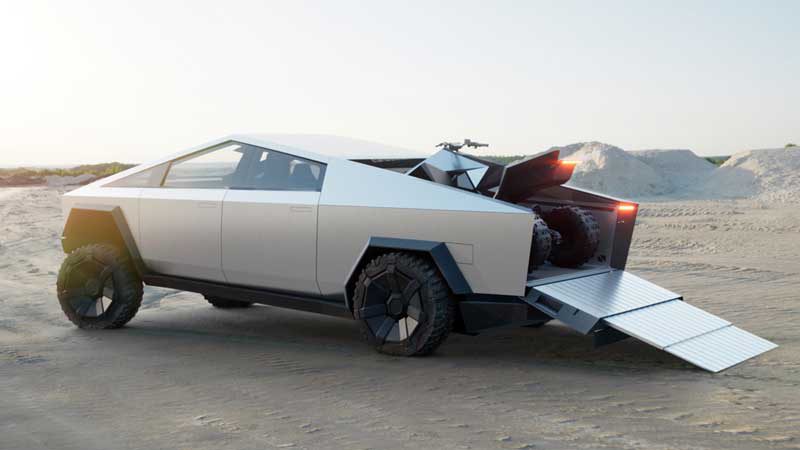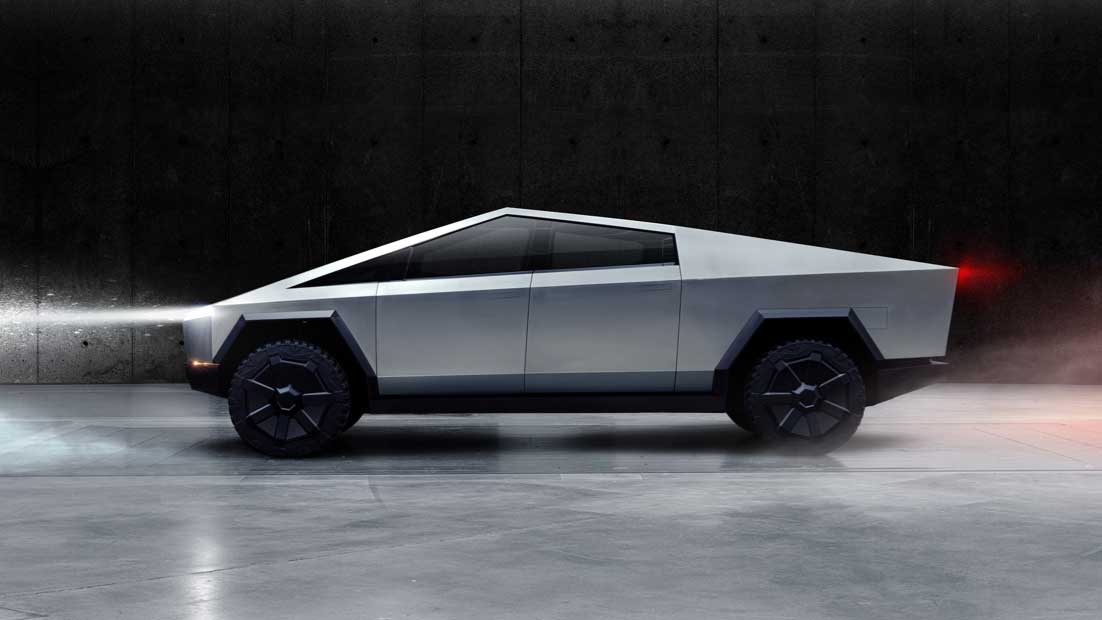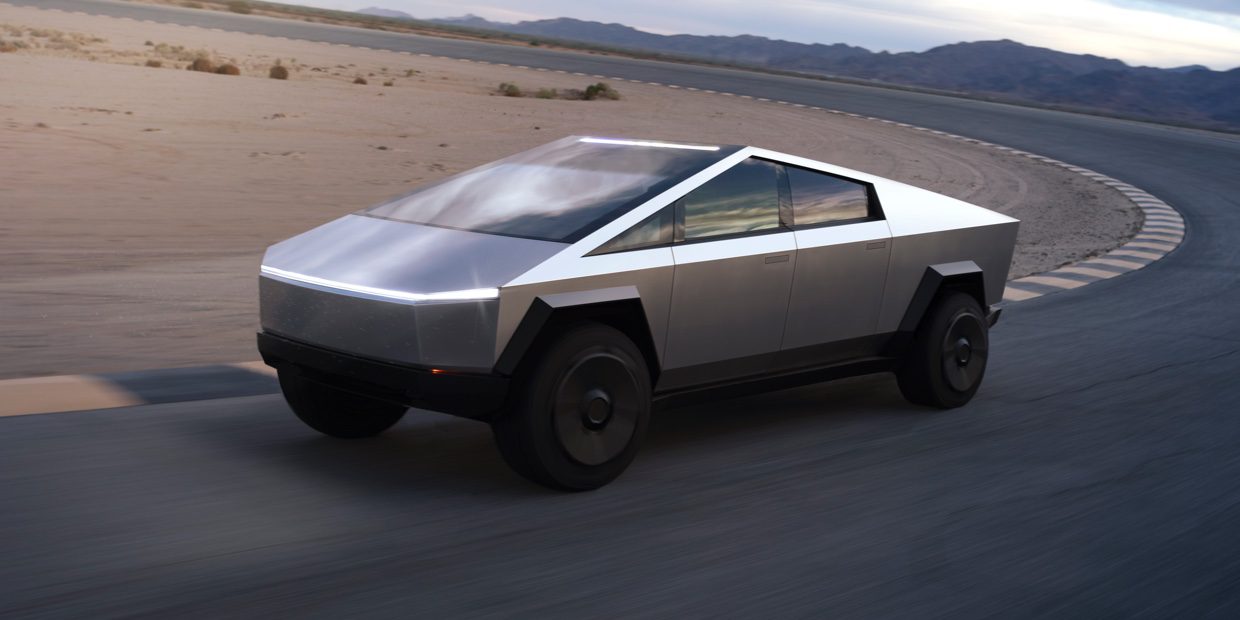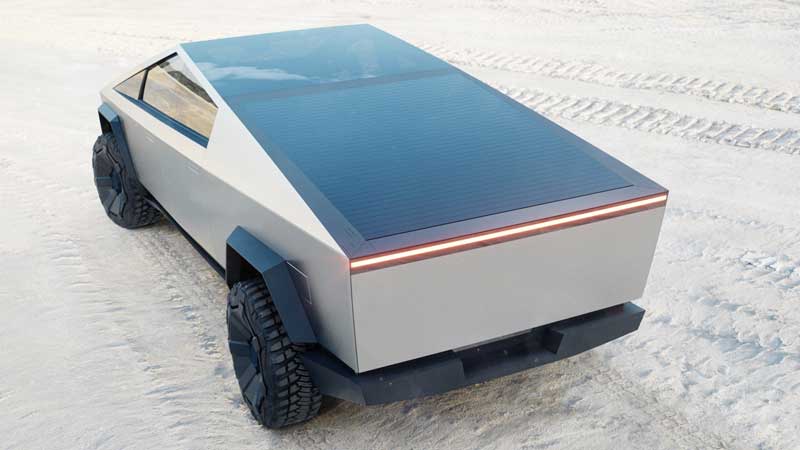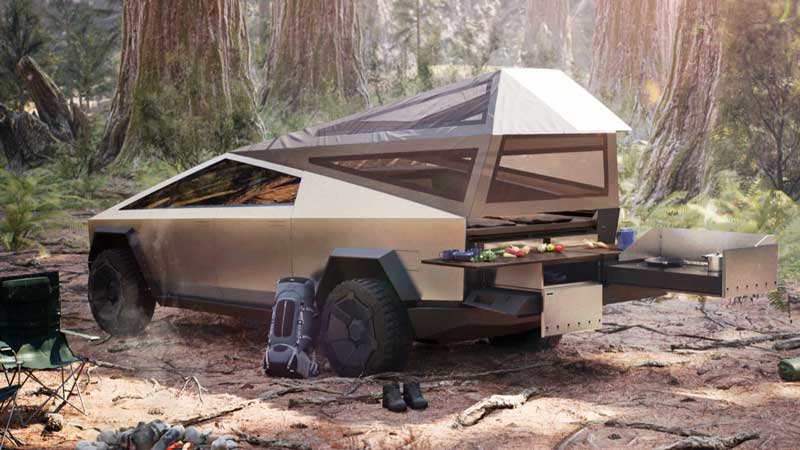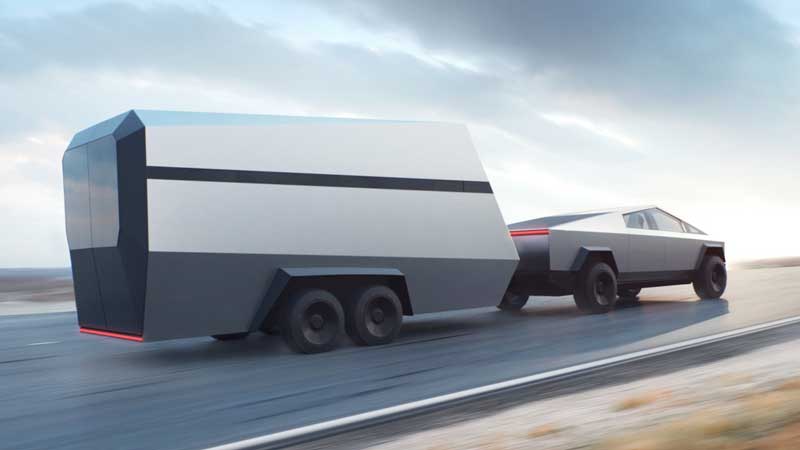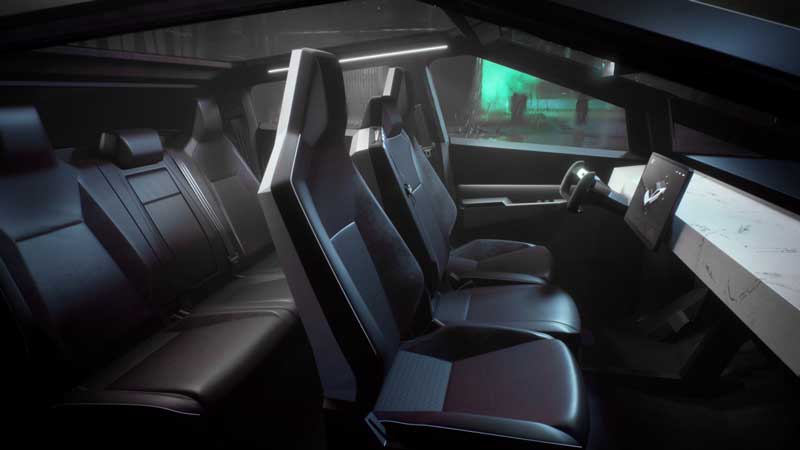Tesla CEO and co-founder Elon Musk says that the California car maker has taken 200,000 orders for its controversial Cybertruck – its electric ute – since the official unveiling of the prototype late last week.
The Cybertruck has polarised opinion – on its ground-breaking design right from the outset, and also on its value for money, whether this will be a winner for Tesla and the long-term impact on its share price.
The orders, however, have flooded in. Musk initially advised over the weekend – via Twitter, of course, that 146,000 orders had been received, and updated this to 187,000 early Monday (Sydney time) and now 200,000 as of mid Monday.
At $US100 a pop ($A150 in Australia), this equals some $US20 million ($A27.55 million) for the Cybertruck, its all-electric utility truck (more commonly known as a pickup in the US and ute in Australia) that features an apparently undentable cold-rolled steel exoskeleton that takes durable utilitarian design to the nth degree.
Even so, the launch event was marred when Tesla designer Franz von Holzhausen put two serious dents in the truck’s armoured glass with a steel ball (Musk immediately admitted this needs “some improvements”).
Franz throws steel ball at Cybertruck window right before launch. Guess we have some improvements to make before production haha. pic.twitter.com/eB0o4tlPoz
— Elon Musk (@elonmusk) November 23, 2019
The launch of the Tesla Cybertruck also saw shares drop from its post-Q3 earnings call high of near $US360 ($A520) -having doubled from its lows of the year – down to a little more than $US330 ($A485).
But solid interest in the Cybertruck grows nevertheless.
As of Sunday morning (Australian time), Musk reported that 42% of the orders taken had been for the dual-motor version of the Cybertruck which is priced at $49,900 ($A73,467 converted), 41% for the tri-motor version at $US69,900 ($A102,913 converted) and 17% for the single-motor version at $US39,900 ($A58,744).
Musk updated the number of orders on Monday morning (Australian time) to 187,000, despite stating at the Q3 call that “people just read too much into” granular deposit figures.
187k
— Elon Musk (@elonmusk) November 24, 2019
Then, at lunchtime on Monday, Musk updated the order numbers again, stating there are now an impressive 200,000 orders for the Cybertruck.
200k
— Elon Musk (@elonmusk) November 25, 2019
While the huge number of orders doesn’t quite outdo the 267,000 pre-orders taken for the Model 3 in its first two days post-launch in 2017 (and it should be noted that the order price for the Model 3 was ten times the $US100 Cybertruck pre-order price), it is significant given the polarising, rule-breaking ute’s design.
It should also be noted that Musk never expected this to be a mass-market vehicle in the same way as the Model 3.
It also underscores the point that this is not really about design – it is also about the ability to offer a vehicle that over-delivers at a price that is within reach of more drivers.
And with the electric ute, and its appeal to trades-people who usually buy on lease, it will be cheaper to own, require less upkeep thanks to that “exoskeleton” and its efficient electric drivetrain, and with lower fuelling/powering costs.
The Cybertruck will offer more than 250 miles (402km) for the single-motor option, more than 300 miles (482km) for the dual-motor and a whopping 500+ miles (more than 800km) for the tri-motor version.
That will outdo other all-electric ute competitors, including the Rivian R1T which will offer up to 400 miles – 643km – range depending on the option chosen.
The Cybertruck also undercuts all-electric utility competitors on price – the Rivian R1T will start at more than $US70,000 ($A103,060 converted) for the mid-range option with 135kWh battery pack, while Bollinger Motors’ B1 and B2 utility trucks start at an eye-popping $US125,000 ($A184,040 converted).
Musk has also been intent on proving that the Cybertruck outperforms America’s most popular internal combustion engine (ICE) pickup truck, the F-150 (noting that Ford is yet to reveal full specs and pricing for its all-electric F-150 expected sometime in 2021).
This included a video shown during launch of the Cybertruck pulling it up a hill on Twitter this morning (Australian time).
Cybertruck pulls F-150 uphill pic.twitter.com/OfaqUkrDI3
— Elon Musk (@elonmusk) November 24, 2019
Underlying all of this is of course are some unknowns, with questions about the Cybertruck’s readiness for production given certain features like rear vision mirrors and window wipers are apparently missing.
The big question though is what Musk’s team planning to provide in terms of battery tech – 800 kilometres range is nothing to be sneezed at.
Musk’s comment Monday morning (Australian time) that “Cybertruck is our last product unveil for a while, but there will be some (mostly) unexpected technology announcements next year” may offer a clue.
Cybertruck is our last product unveil for a while, but there will be some (mostly) unexpected technology announcements next year
— Elon Musk (@elonmusk) November 24, 2019
With Tesla planning a Battery Day much like its Autonomy Day for the first quarter of 2020, we can likely expect to see some interesting ground made in energy density – but also it would, some significant surprises.

Bridie Schmidt is associate editor for The Driven, sister site of Renew Economy. She has been writing about electric vehicles since 2018, and has a keen interest in the role that zero-emissions transport has to play in sustainability. She has participated in podcasts such as Download This Show with Marc Fennell and Shirtloads of Science with Karl Kruszelnicki and is co-organiser of the Northern Rivers Electric Vehicle Forum. Bridie also owns a Tesla Model Y and has it available for hire on evee.com.au.

